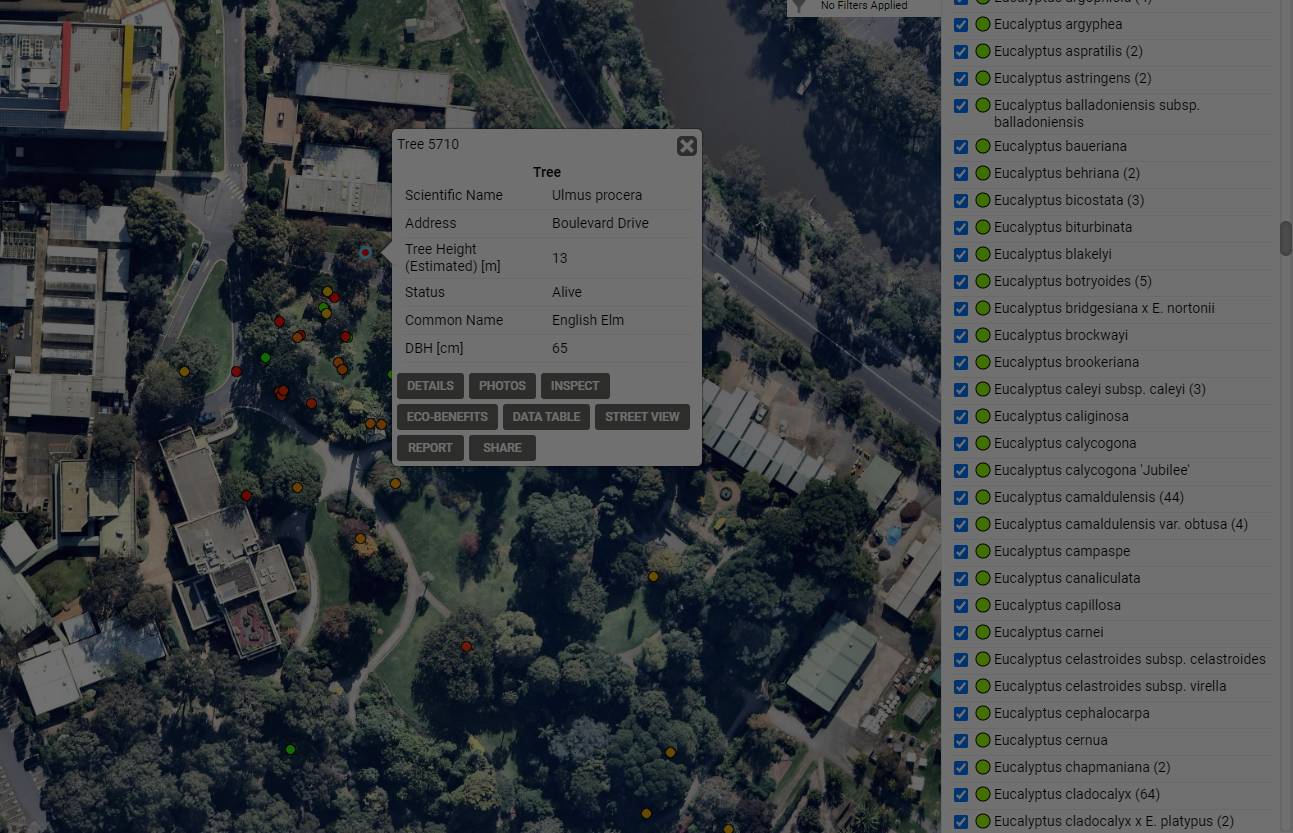Arboriculture Asset Management
Trees are a valuable and essential component of the urban landscape, providing numerous amenity values including shade, habitat for wildlife, air purification, noise reduction, reduction in stormwater runoff, supporting mental and physical wellbeing, and aesthetic value. For these reasons, it is important that establishments and organisations take their responsibility to maintain their trees seriously and prioritise their care through the process of arboriculture asset management.
The process of arboriculture asset management involves three key components: tree assessment and inventory, risk assessment, and annual maintenance.
Tree Assessment and Inventory
A comprehensive tree assessment and inventory is a record of every significant tree on the property, including custom attributes and recommendations for their care. The purpose of this component is to identify and assess the current state of each tree on the property, including its species, age, condition, and any biotic or abiotic stressors affecting its health and structural integrity. This information is crucial for the development of a tailored and effective maintenance plan, allowing arboriculture asset managers to prioritise tree maintenance and management activities and make informed decisions on the long-term care of each tree.
Risk Assessment
Risk assessment is a critical component of arboriculture asset management, and involves quantifying the risk that trees pose to people and property. Quantitative Tree Risk Assessment (QTRA) is used to determine the likelihood of tree failure and the potential consequences of such failure. The results of the QTRA are used to prioritise tree maintenance and management activities, allowing arboriculture asset managers to focus on managing the trees that pose the greatest risk to people and property. Regular risk assessments ensure that the level of risk posed by each tree is continually monitored and managed, reducing the risk of tree failure and ensuring the safety of people and property.
Annual Maintenance
Annual maintenance is an important aspect of arboriculture asset management, and involves regular inspections, pruning, and pest and disease diagnosis and treatment. Regular inspections allow arboriculture asset managers to identify and address any issues affecting the health and structural integrity of trees, while pruning helps maintain the desired shape, size, and structure of each tree. Pest and disease diagnosis and treatment ensures that any issues affecting the health of trees are addressed in a timely manner, reducing the risk of tree failure and preserving the aesthetic and amenity values they provide. By taking a proactive approach to tree maintenance, arboriculture asset managers can ensure that the trees on their property remain healthy, safe, and continue to provide valuable benefits to the community for many years to come.
Arboriculture asset management is an important aspect of managing trees in the urban environment. By prioritising the care and maintenance of trees through comprehensive tree assessment and inventory, risk assessment, and annual maintenance, arboriculture asset managers can ensure that the trees on their property are safe, healthy, and continue to provide valuable benefits to the community. As a responsible establishment or organisation, it is their duty of care to maintain their trees in a safe manner and reduce the exposure of risk to the public, preserving the amenity values they provide.
Interested in learning more about Arboriculture Asset Management? Get in contact with us.

Blog written by Colin Fry
Colin is the director of Tasmanian Arboriculture Consultants Pty Ltd and our lead consulting arborist. He comes with an academic background and more than 20 years in practical tree care. As a registered member of Arboriculture Australia and secretary of the Tasmanian Arboriculture Organisation, Colin is passionate about Urban Forestry and helping people realise the benefits of living with well managed trees.

